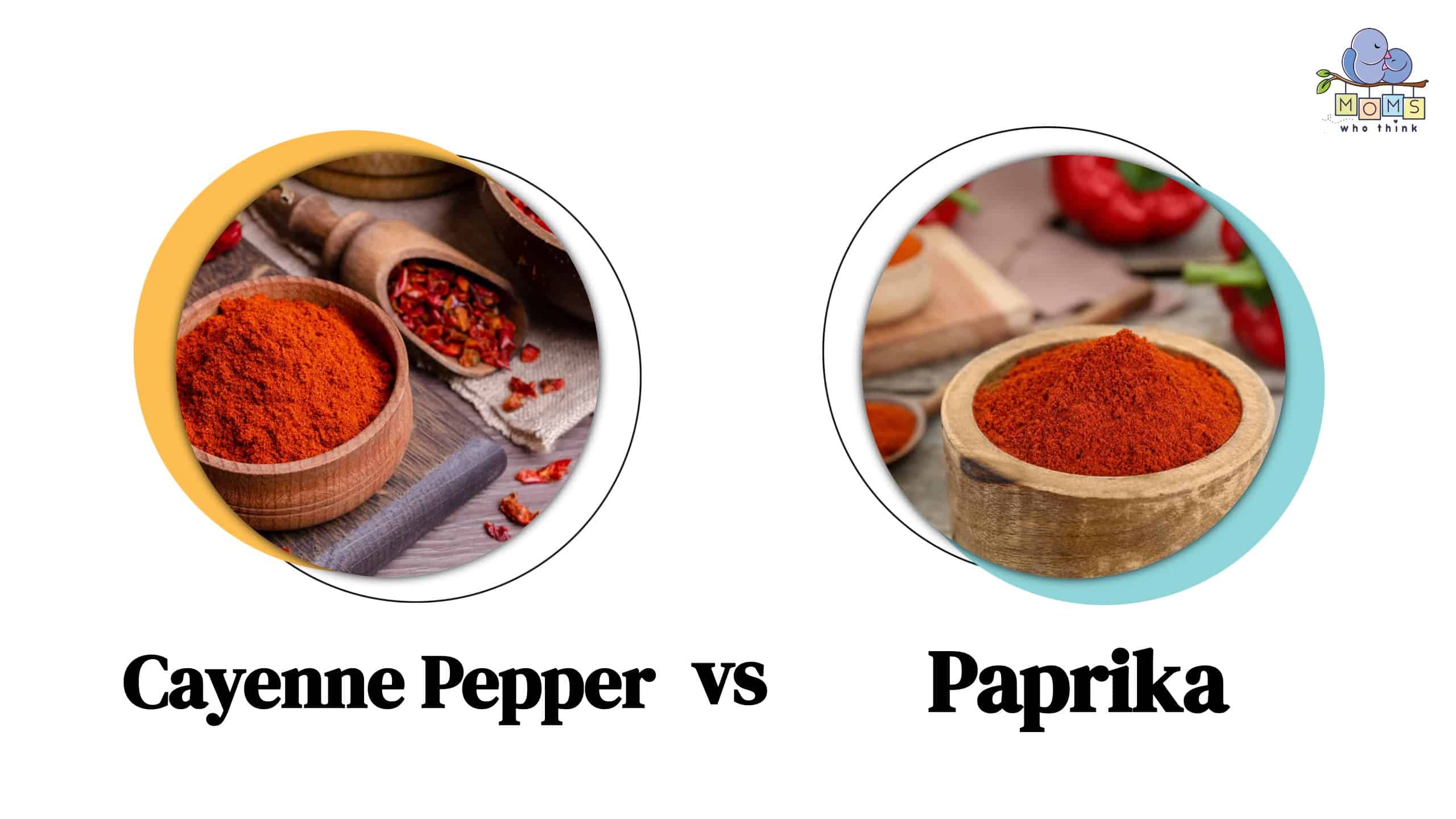Cayenne pepper is a specific hot pepper used primarily to add heat to dishes while paprika comprises unpredictable ingredients with a sweet and flavorful taste.
Chilli pepper has been around for ages and is used to make countless seasonings and spice blendings. While cayenne pepper and paprika both contain chili, they are different from each other.
Some people might assume cayenne pepper and paprika can be used interchangeably since they are found in recipes together. After all, they are both made from dried red pepper and look like ground red pepper.
Well, the two spices share some similarities but are different. In texture, cayenne is grittier while paprika is smooth. This post explains the differences between cayenne pepper and paprika, and which one to consider for your next dish.
What is Cayenne Pepper?
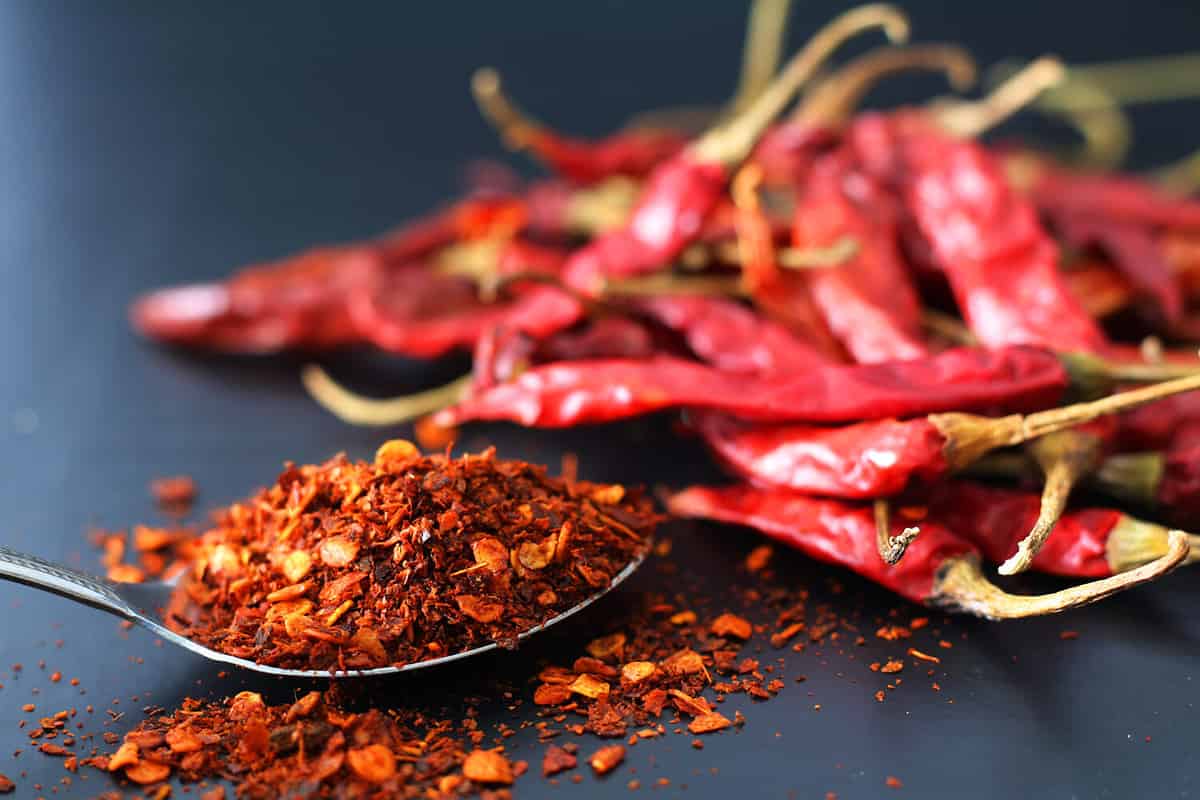
Cayenne pepper is a simple ingredient that adds an undeniable, mistakable zing to any dish!
©Endorphin_SK/Shutterstock.com
Cayenne pepper is a very simple ingredient since it contains only one ingredient; cayenne pepper. They are usually long, thin, and bright with a glossy cherry-red hue. The peppers describe a group of peppers from the variety Capsicum annum.
Capsicum is an annual plant from the nightshade family which also includes jalapenos, paprika, and bell peppers. They are a popular spice across the world with a hot kick in dishes. Cayenne is dried and ground into a fine powder.
All cayenne peppers have one thing in common. They are hot and spicy. Cayenne is mainly used to add heat to dishes and not flavor. A very little amount of cayenne in dishes goes a long way. Small quantities of 1/8-1/4 teaspoons are recommended for a whole meal.
Uses and Health Benefits Cayenne Pepper
Cayenne pepper can be used for a wide range of uses and health benefits. Some of them include:
- Pain relief: When applied topically, cayenne powder has been shown to relieve pain. The compound capsaicin in cayenne powder reduces a compound neuropeptide that travels to the brain to signal pain.
- Psoriasis treatment: This is an autoimmune disease that causes itching on the skin. The disease has no treatment and can cause the skin to have red patches and be scaly. Topical capsaicin creams help reduce itching and improve the skin's appearance.
- Improves digestive health: Cayenne pepper may improve digestive health by sending signals that increase the production of digestive health. Cayenne improves gastric juices and enzyme production to help with digestion. Capsaicin in the stomach also helps improve the health microbiome.
- Boosts metabolism: Capsaicin in cayenne has been shown to increase body heat. This in turn helps boost metabolism, helping you burn more calories.
- Packed with beneficial compounds: Cayenne comes packed with a wide range of ingredients that benefit the body in so many ways. It contains vitamins A, C, and E. Cayenne also contains lutein, beta carotene, and Zeaxanthin which aid in eye health.
- Maintains healthy weight: Cayenne helps ramp metabolism in the body which may help burn more calories. This helps maintain a healthy weight.
What is Paprika?
Paprika is a relatively mild powder made of dry and finely ground red peppers. The spice is made of different red peppers resulting in distinct heat levels and flavors.
The word ‘paprika’ is a Hungarian word that means pepper. It’s a popular spice used around the world with a spicy, sweet, or smoked taste. Paprika is known for adding a rich flavor to dishes that you may find difficult to do without once you get used to it.
But not all paprika is spicy. When cooking, you need to equip yourself with some knowledge of which type of paprika you’re using. Some of the best quality paprika comes from Hungary and Spain. In Hungary, peppers are cured and dried in the sun, while in Spain peppers are cured over smoking logs creating a deep and smoky flavor.
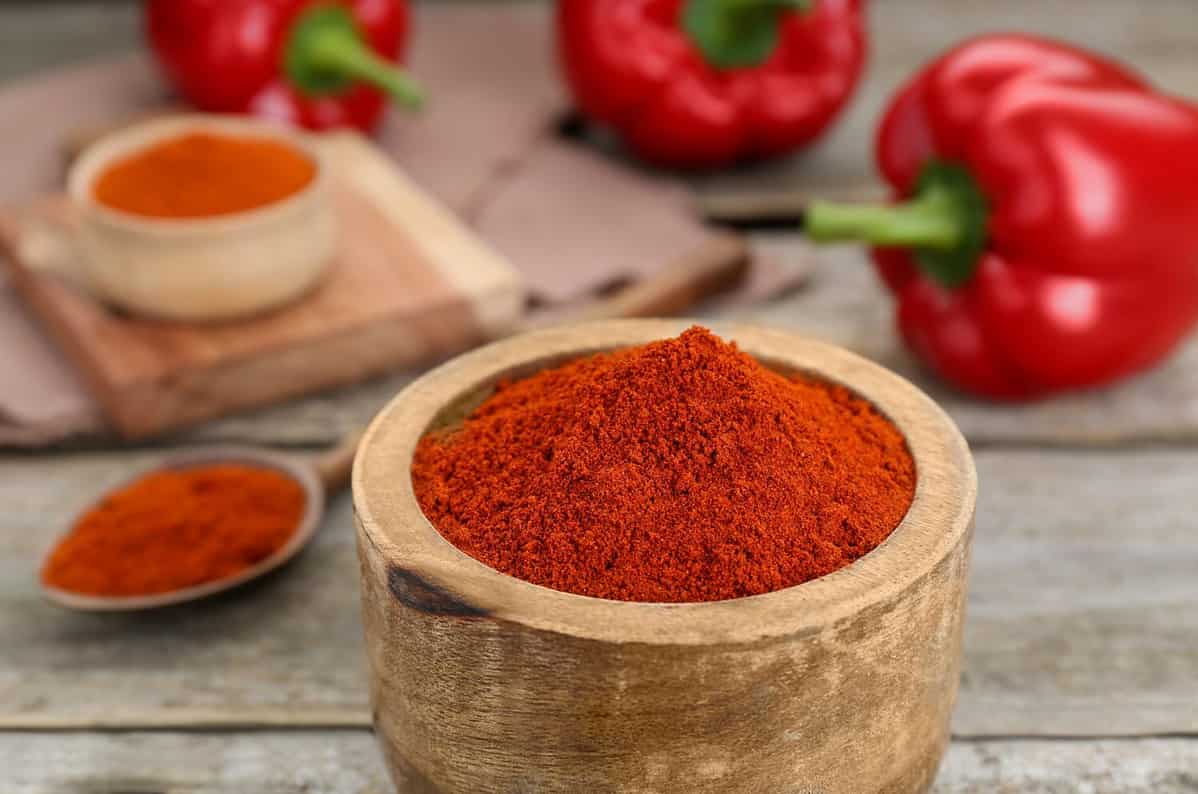
Paprika is a Hungarian word meaning pepper.
©New Africa/Shutterstock.com
Types of Paprika
There are three types of paprika. These include:
- Hot paprika: Hot paprika is also known as Hungarian hot paprika. It has the sweetness and flavor of sweet paprika but also retains some heat. When making hot paprika, the seeds and placenta are left in the peppers. This is where capsaicin, which produces the heat, is located.
- Sweet paprika: Sweet paprika is the most common type. It’s a non-spicy powder with an earthy, sweet, and warm flavor. Sweet paprika is widely used to make goulash and chicken paprikash in Hungarian dishes.
- Smoked paprika: Smoked paprika is made by smoking chili peppers using wood. The chili is then dried and ground. It creates a bolder aroma which is used to make chili powders.
Health Benefits and Uses of Paprika
Paprika, just like cayenne, is packed with nutrients giving it several uses and health benefits. The spice is rich in antioxidants, vitamins, and minerals. Below are some of the benefits and uses.
- Loaded with nutrients: Paprika is a nutrient-rich spice that comes packed with calories, proteins, fat, carbs, fiber, vitamins A, E, B6, and iron. They are small amounts of nutrients but ones that greatly boost your overall health.
- Helps promote healthy vision: The spice also contains nutrients that help boost eye health. Paprika contains beta carotene, vitamin E, zeaxanthin, and lutein which boosts eye health. A study done on over 1800 women with lutein and zeaxanthin in their diets found that they were 32% less likely to develop cataracts.
- May help reduce inflammation: There are several paprika varieties with the capsaicin compound which helps reduce inflammation. It can help against several auto-immune and inflammatory diseases.
- Improves cholesterol levels: A carotenoid capsanthin helps improves the good levels of HDL which is the good cholesterol. They also help decrease the bad cholesterol levels.
- May have anticancer effects: Several compounds in paprika are being studied to help fight cancer. For example, capsaicin has been shown to help fight the growth of cancer cells. However, more extensive research is needed on the anticancer potential of this spice.
Nutritional Differences Between Cayenne and Paprika
Cayenne and paprika are packed with nutrients that are beneficial to the body. Let’s have a deeper look at the nutritional differences between these two:
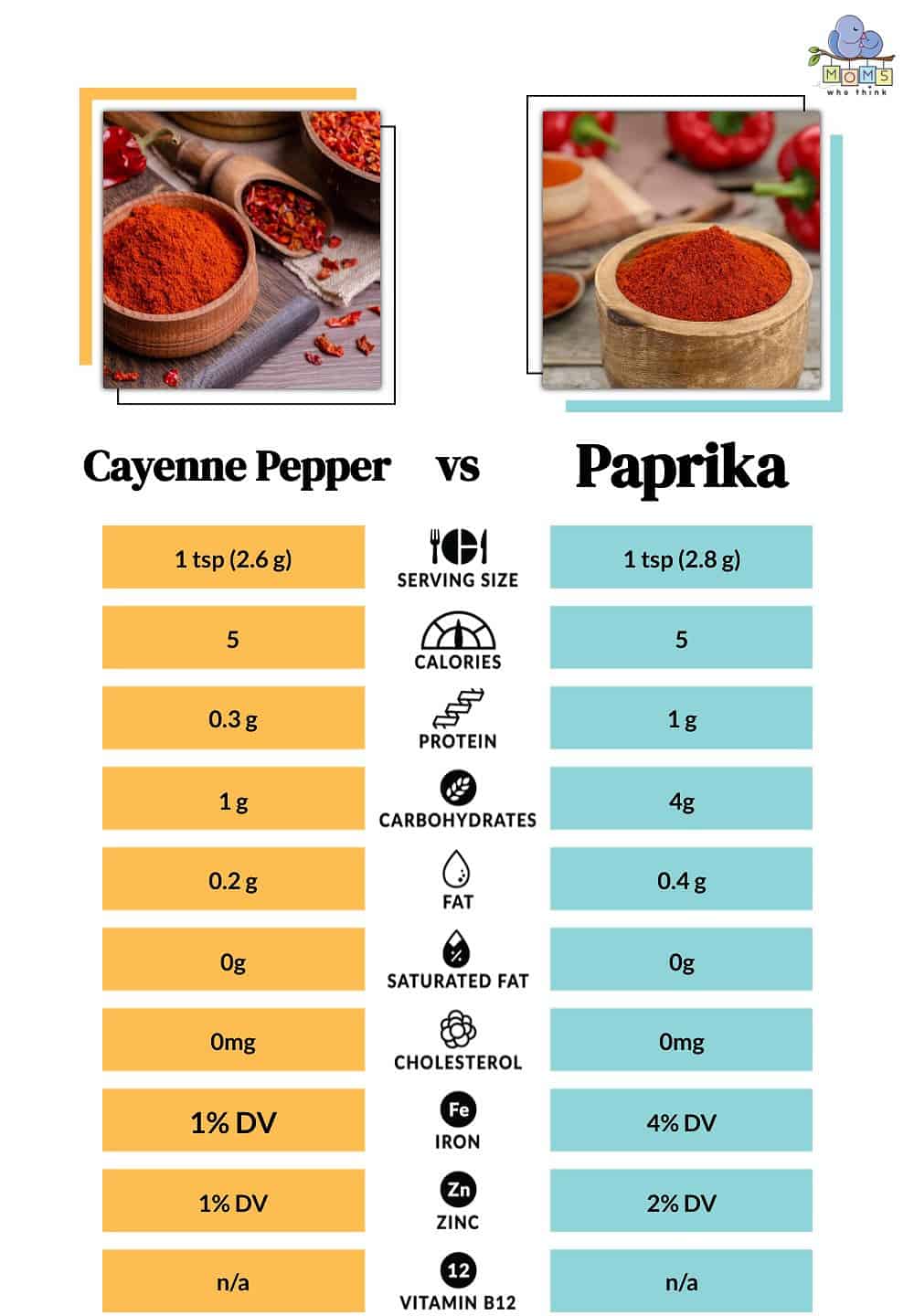
- Fat: Both spices are quite low in fats. However, they contain minimal amounts which may not impact your daily fat intake. Adding them can enhance your food flavor without excessive fats.
- Protein: They both contain small amounts of proteins. In 100 grams of paprika, you’ll get about 14 grams of proteins. Cayenne contains about 12 grams of protein in 100 grams. These are very small amounts considering the spices are used in minimal quantities.
- Carbs and calories: Paprika contains 5 calories and 4 grams of carbs in a single teaspoon. Cayenne has 5 grams of calories and 1 gram of carbohydrates in a single teaspoon. The small amounts mean both spices can be enjoyed without worrying about your carbs and caloric intake.
- Vitamins: Spices are rich in vitamins contributing to our body's overall health. Paprika is quite rich in Vitamins A and E. Vitamin A helps boost the immune system and supports healthy vision. Cayenne, on the other hand, contains Vitamins A, C, and E, albeit in small quantities than paprika. It’s a valuable addition to vitamin C boosting your immune and aiding in iron absorption.
- Minerals: The two spices contain several minerals beneficial to our bodies. A 2018 release from FoodCentral Data shows pepper contains 443 mg calcium, 9.71mg iron, 171 mg magnesium, 158 mg calcium, 20mg sodium, and 1.19mg zinc in 100 grams. Generally, both spices provide a wide range of minerals in various quantities.
- Omega-3 and Omega-6: Both spices are very low in both Omega-3 and Omega-6 fatty acids.
- Antioxidants and phytonutrients: Paprika is a great source of antioxidants that help combat oxidative stress. Cayenne is also packed with capsaicin which is a powerful phytonutrient. Capsaicin possesses antioxidant and anti-inflammatory properties. It's responsible for the heat in dishes.
Can you Substitute Cayenne for Paprika?
Definitely. You can easily substitute cayenne for paprika since it adds the same spice to your dish. However, you’ll need to choose a paprika type that’s pretty close to cayenne.
Hot paprika is a wonderful substitute, but you can also use sweet paprika. Be ready to lose some heat in your dish. This is why hot paprika is a better alternative since it contains some cayenne pepper.
When using paprika as a substitute, you may want to use twice the amount of cayenne. This is because paprika is a lot milder than cayenne. But it’s the best substitute if you’re looking for a flavor and color close to cayenne.
Food Substitutes for Cayenne
If you enjoy spicy food with some heat, you’ll need alternatives when the cayenne you’re used to is missing. Below are some worthy substitutes to consider:
- Paprika: As indicated, hot paprika is the best cayenne substitute. This is because cayenne is one of the ingredients in paprika. However, since paprika is not as spicy as cayenne, you’ll need to double the amount to get something close to cayenne.
- Chili powder: The next great option is chili powder used instead of cayenne. It is a type of powder with a variety of ground peppers. A good example is pasilla powder which has a similar heat to cayenne. However, make sure your chosen chili powder only contains chili and not other ingredients like garlic. A similar amount of chili powder might produce a smoky flavor.
- Red chili flakes: Red chili may also produce a similar effect to cayenne. However, red chili flakes are spicier and more flavorful. Be sure to just add a little bit of it. Adding it in excess may distort the overall flavor and aroma.
- Gochugaru: Commonly found in Korean cuisine, gochugaru comprises dried red peppers ground into flakes instead of powder. Gochugaru has a slightly smoky and earthy taste. However, it has a coarser texture compared to cayenne. If you don’t mind the texture, you can add it in equal amounts to add a smoky flavor to your meals.

Red chili flakes is an excellent substitute for cayenne.
©N K/Shutterstock.com
Fresh Cayenne Substitutes
For those using fresh cayenne peppers, you may need fresh substitutes. You could use a variety of peppers as a fresh cayenne replacement. Some of the best choices include Tabasco powder which is very close in heat and flavor.
When you want something more spicy than cayenne, then consider using hotter serrano peppers. An even hotter choice is Thai pepper which is twice as hot as cayenne.
If you want a milder option, then consider Jalapeno pepper, Jalapeno is mild and you might need to add more to get something close to cayenne. Cayenne is actually 12 times hotter than the jalapeno.
Storage of Cayenne Pepper
Cayenne has a pretty good shelf life of up to 720 days when stored in a tightly sealed container and placed in a cool dry place. Avoid exposure of cayenne to heat, moisture, and humidity.
Direct sunlight or fluorescent light may also affect the cayenne flavor and color. Dried cayenne may also be frozen and stored. However, you’ll need a freezer-safe bag to avoid contamination by mold.
What To Look For When Buying Cayenne Pepper
When buying cayenne pepper, be sure to check the ingredient list as with most spices. Ensure the cayenne pepper is gluten-free, 100% pure, and without additives.
The powder should also be packed in high-quality jars or bags and properly labeled. Labels should indicate the expiry date and instructions for use.
Food Substitutes for Paprika
If you happen to run out of paprika, there are some great substitutes out there. Check them out just in case you’d like to give them a try for other reasons;
- Cayenne pepper: Cayenne pepper tops our list as one of the best paprika alternatives. While it’s slightly hotter, cayenne may be used in place of paprika. You only need to reduce the amount to use in your dish. This helps reduce the heat. For example, one full teaspoon of paprika should be equivalent to half a teaspoon of cayenne. You can even get a close flavor and taste by adding a little sugar. Some little salt also helps reduce the level of spiciness.
- Maras pepper flakes: Maras pepper flakes tend to have a perfect level of sweetness and spiciness. They are common spices in the Middle East. If you’re using one tablespoon of paprika, substitute with ½ teaspoon of Maras peppers. You can add more if you want to increase the spiciness.
- Black peppercorns: Both white and black pepper can also be used as alternatives to paprika. However, they cannot be used on tomato-based or Italian meals since they lack the reddish and orange hue found in paprika.
- Bell peppers: If you lack all the ingredients above, then you can make another alternative using bell peppers. Get some ripe peppers and let them brittle a bit using a dehydrator. Grind them and you’ll have a paprika alternative in minutes.
Storage of Paprika
Paprika needs to be stored in an airtight container and placed in a dark cool spot. The container can be stored in a refrigerator or a space drawer. Keep the container away from the light that can adversely affect the spices.
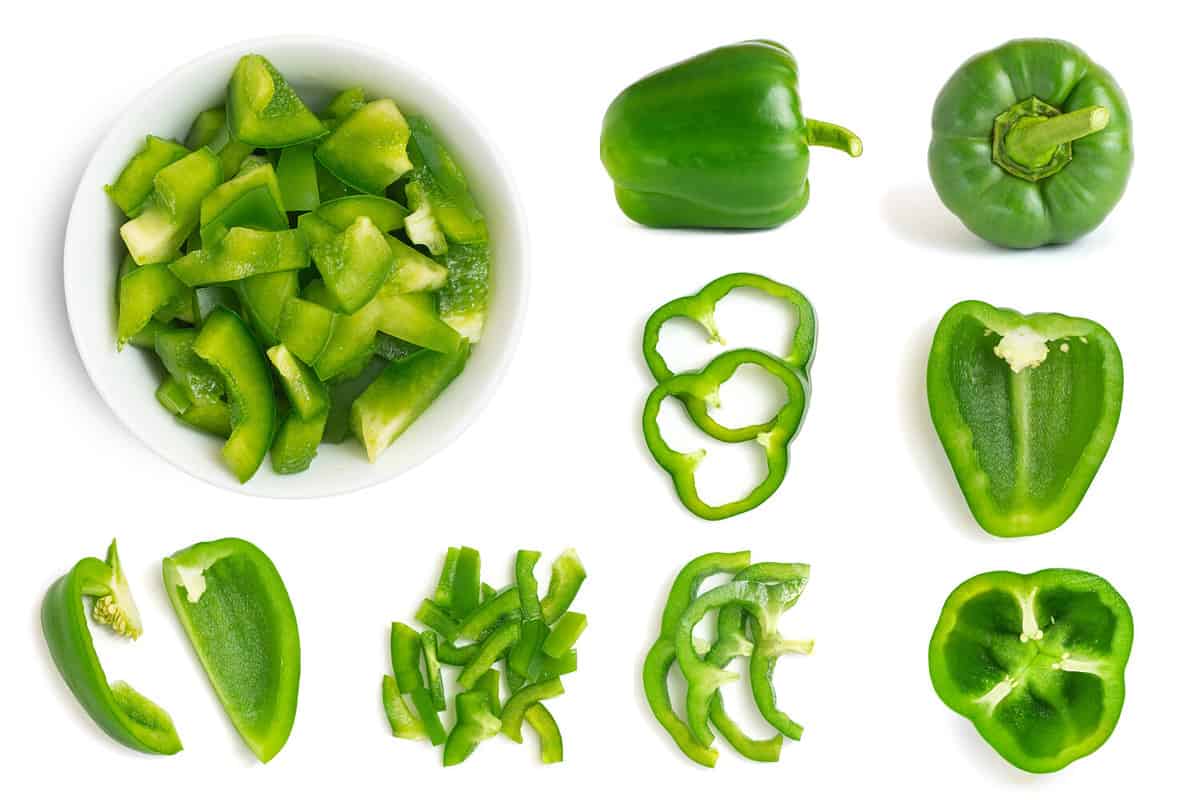
If ever you're out of paprika, grab a bell pepper and dehydrate, then grind it and you're good to go!
©BigNazik/Shutterstock.com
What To Look For When Buying Paprika
When buying paprika, you’ll need to decide between the different types. This is mostly dependent on the preferred taste. Common paprika varieties include sweet paprika, hot paprika, smoked paprika, Hungarian paprika, and Spanish paprika.
In addition, make sure the paprika is well packaged and labeled. The labeling details should indicate the ingredients present and the date of expiry.
A Quick Comparison of Cayenne vs. Paprika
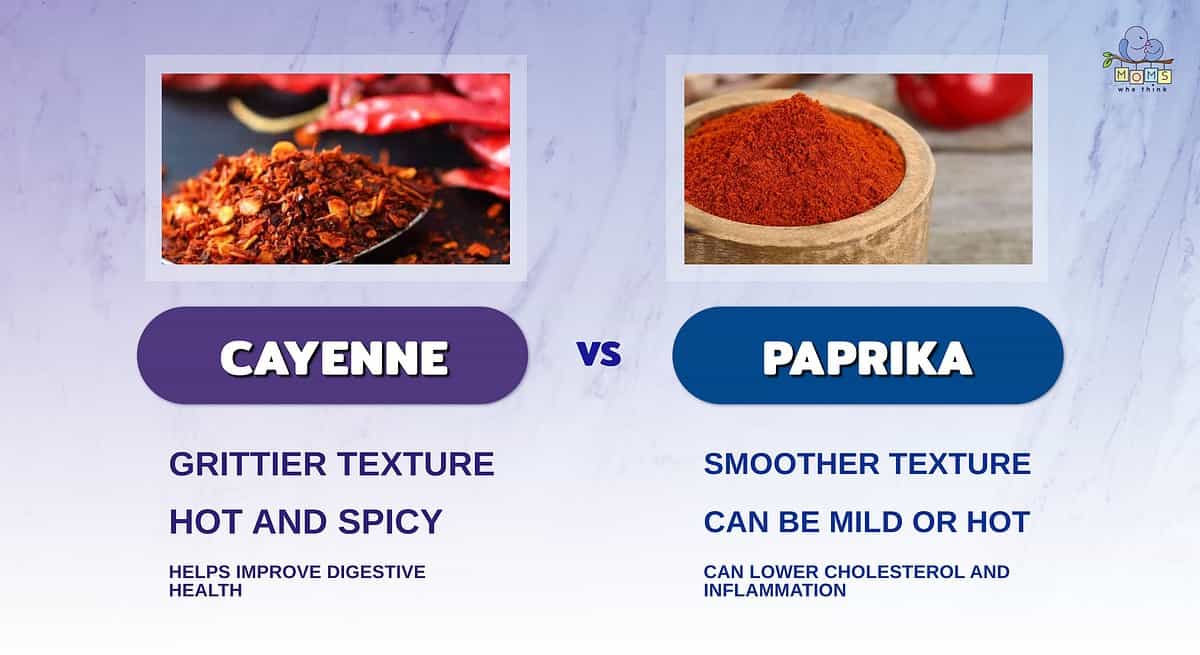
One of the easiest ways to tell cayenne and paprika apart is texture. Cayenne is grittier than paprika. All cayenne peppers are hot and spicy, while paprika can range from hot to mild. If you have a sensitivity to spice, picking paprika is more than likely going to be the better option. Make sure you understand what you're getting into before adding any spicy ingredient to a recipe. Cayenne is a popular choice for its heat, but it can cause problems for some. In terms of health benefits, cayenne pepper is known to improve the health of your digestive system, while paprika can lower cholesterol and reduce inflammation. Of course, always be sure to consult your doctor before making any decisions that could impact your health.
Now that you know the difference between cayenne and paprika, it's time to start cooking! If you need a recipe to help you get started, check out this one:
Print
Lime Pork with Peppers
- Yield: Serves 4
Ingredients
2 medium limes
¼ cup reduced-sodium soy sauce
4 garlic cloves, minced
1 teaspoon dried oregano
½ teaspoon dried thyme
⅛ teaspoon cayenne pepper
2 to 3 sprigs fresh parsley, stems removed
1 pound pork tenderloin, cut into 1-inch cubes
1 bay leaf
1 tablespoon olive oil
1 teaspoon brown sugar
2 medium onions, each cut into 8 wedges
2 small green peppers, cut into 1-inch pieces
2 medium tomatoes, each cut into 8 wedges
Instructions
1. Finely grate lime peel, reserving 2 tablespoons peel. Juice the limes.
2. In a bowl, combine the soy sauce, garlic, oregano, thyme, cayenne pepper, parsley, lime juice, and reserved lime peel.
3. Pour ½ cup marinade into a large resealable plastic bag; add the pork and bay leaf. Seal bag and turn to coat; refrigerate for at least 2 hours. Cover and refrigerate remaining marinade.
4. Drain pork and discard marinade. Discard bay leaf.
5. In a large nonstick skillet, heat oil over medium high heat. Add sugar; stir until bubbly.
6. Add the meat; cook and stir for 3-4 minutes or until browned.
7. Reduce heat; add the onions, peppers, and the reserved lime mixture. Cook, uncovered, for 10-15 minutes or until vegetables are tender. Add the tomatoes; cook 1 minute longer.
Nutrition
- Serving Size: 1½ cups
- Calories: 240
- Sodium: 540mg
- Fat: 8g
- Saturated Fat: 2g
- Carbohydrates: 18g
- Fiber: 3g
- Protein: 26g
- Cholesterol: 63mg
